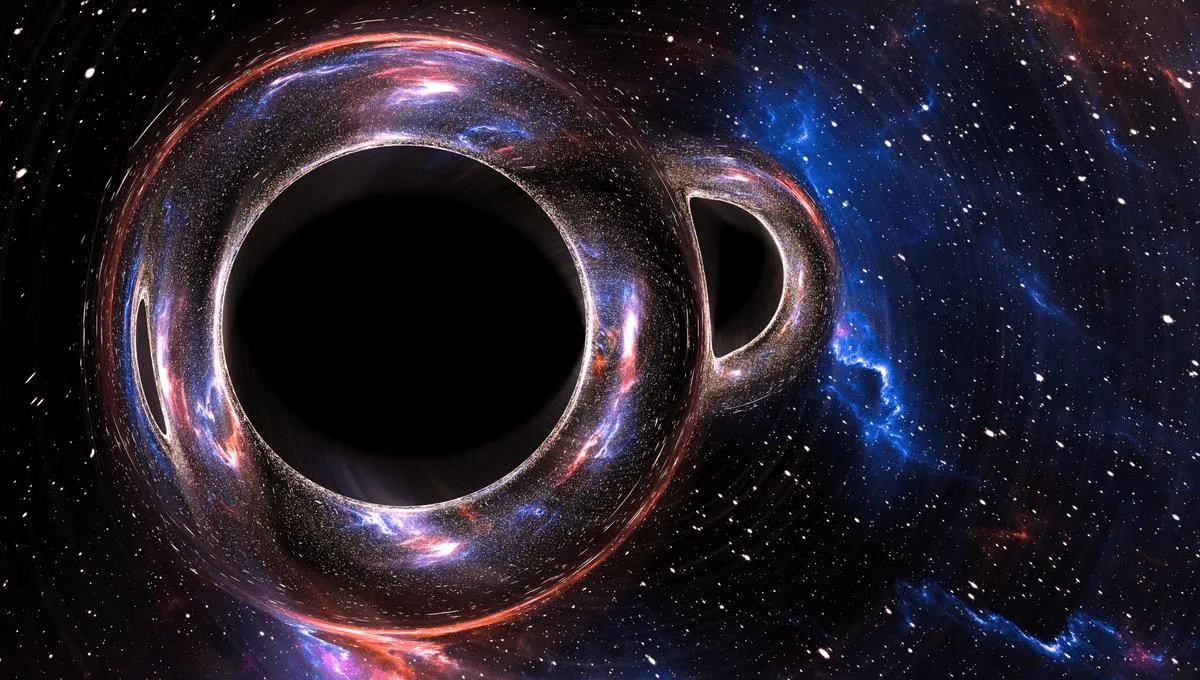
In the ten years since the first detection of gravitational waves, scientists have made remarkable advancements, identifying hundreds of these waves generated by the collisions of incredibly dense cosmic objects, including neutron stars and black holes. Recent observations, particularly two new events, could represent a significant paradigm shift in our understanding of the universe.
On October 11, 2024, an extraordinary event labeled GW241011 was detected, showcasing the collision of two black holes with masses approximately 17 and 7 times that of our Sun. This collision occurred an astounding 700 million light-years away from Earth. One of the most fascinating aspects of GW241011 is the spin of the heavier black hole before the merger; it was spinning at around 75 percent of its theoretical maximum, making it the fastest rotating black hole observed to date.
The second event, known as GW241110, involved black holes of similar masses, about 16 and 8 times that of our Sun. However, what set this event apart was not the speed of the spin but its direction. Typically, black holes spin in the same direction as their orbit; however, in this case, the larger black hole was found to be spinning in the opposite direction. This unique configuration marks it as a first of its kind.
The two groundbreaking events suggest that these larger black holes may be the result of previous black hole mergers, indicating that they are second-generation black holes. This revelation provides critical insights into the environments where such mergers occur, emphasizing the dynamic and complex nature of these cosmic regions.
Stephen Fairhurst, a professor at Cardiff University and spokesperson for the LIGO Scientific Collaboration, noted the significance of these events, stating, “GW241011 and GW241110 are among the most novel events in the hundreds observed by the LIGO-Virgo-KAGRA network. With one black hole significantly more massive than the other and rapidly spinning, they provide tantalizing evidence that these black holes formed from prior mergers.”
Gianluca Gemme, spokesperson for the Virgo Collaboration, added, “The unusual spin configurations observed in these events challenge our understanding of black hole formation and offer compelling evidence for hierarchical mergers in dense cosmic environments.” He emphasized the importance of international collaboration in uncovering the universe's most elusive phenomena.
To commemorate the first decade of gravitational wave observations, several experts were interviewed, including Professor Vicky Kalogera from Northwestern University. She highlighted, “The measurements we are making now remain the most precise measurements humans have ever achieved in any field of science and engineering.” The precision with which these record-breaking events were measured allowed researchers to conduct tests related to both particle physics and general relativity.
On the particle physics front, researchers examined potential effects of ultralight bosons, hypothetical particles that could explain dark matter. The observations have excluded a wide range of possible masses for these particles. In terms of general relativity, the team sought effects that might contradict Einstein’s theory but found strong agreement between their observations and the established theory.
As the research continues, Carl-Johan Haster, an assistant professor of astrophysics at the University of Nevada, Las Vegas, explained, “This discovery indicates that we are more sensitive than ever to any new physics that might lie beyond Einstein's theory.” It appears that uncovering the mysteries of the universe may simply require observing more of these extraordinary events.